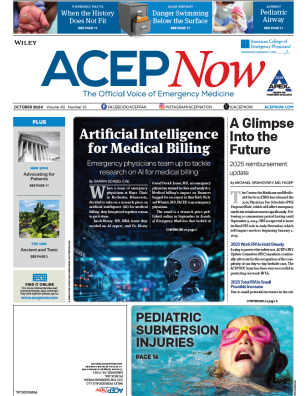Acute mesenteric ischemia (AMI) refers to a group of disease entities whose clinical features are caused by inadequate blood flow and tissue oxygenation to the small bowel and mesentery. The lack of sufficient oxygenation can be caused by occlusive or nonocclusive obstructions in either the venous or arterial system.1
The overall incidence of AMI is estimated at 12.9 per 100,000 person-years.2 It is reported that AMI represents 0.1% of all hospital admissions and 1% of all admissions for acute abdomen in the elderly population.3 These admission statistics are increasing due to the aging population, heightened awareness of diagnosis, and improved survival of patients with cardiac disease.3,4
The overall mortality is extremely high at 60%-80%.4 Mortality is dependent on stage at presentation. If a patient presents prior to intestinal infarction, mortality is about 50%; after infarction, mortality is 62%-93%.4 Despite technological and therapeutic advances, overall mortality has not changed significantly in the past few decades.1 However, early diagnosis and intervention prior to intestinal infarction is associated with improved mortality.5
The pathogenesis of AMI begins when impairment of microcirculation caused by blood vessel obstruction, constriction, or congestion leads to activation of inflammatory cells, endothelial cells, and platelets. This results in increased inflammatory cytokine production and cell permeability.
Damage to the microcirculation can cause local irreversible intestinal necrosis and translocation of gut bacteria, as well as systemic injuries such as disseminated intravascular coagulation (DIC) and systemic inflammatory response syndrome (SIRS). Reperfusion injury is a common feature of AMI, where restoration of oxygenation to ischemic tissue leads to the generation of free radicals and subsequent damage to cell membranes.6
The spectrum of AMI can be divided into four subtypes based on etiology: embolic, thrombotic, nonocclusive, and venous.
Mesenteric arterial embolism is the most common, accounting for almost half of all cases of AMI.4 Risk factors associated with arterial embolism include age, dysrhythmias (especially atrial fibrillation), myocardial infarction, rheumatic heart disease, aortic aneurysm, cardiac surgery, angiography, and endocarditis.
Mesenteric arterial thrombosis is the underlying etiology in 20% of all AMI cases.4 The major risk factor is severe atherosclerosis.1,4,6 The superior mesenteric artery (SMA) is the most common site of both embolic and thrombotic disease. Nonocclusive disease is caused by low-flow states, such as heart failure or shock, and accounts for 25% of all AMI cases.
Pages: 1 2 3 4 5 | Single Page




No Responses to “Acute Mesenteric Ischemia”